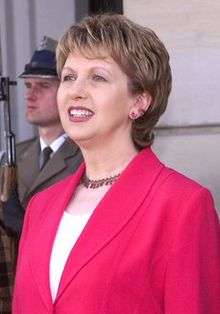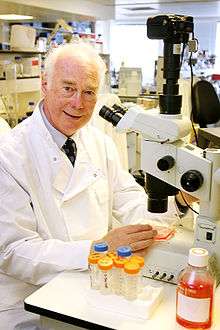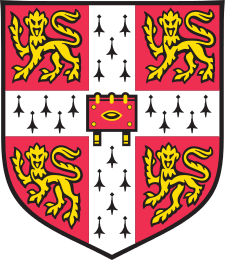St Edmund's College, Cambridge
| Colleges of the University of Cambridge | ||||||||||||||||||
| St Edmund's College | ||||||||||||||||||
 | ||||||||||||||||||
|
| ||||||||||||||||||
| Founders | Henry Fitzalan-Howard, 15th Duke of Norfolk and Baron Anatole von Hügel | |||||||||||||||||
| Named after | Edmund of Abingdon | |||||||||||||||||
| Established | 1896 | |||||||||||||||||
| Previously named | St Edmund's House | |||||||||||||||||
| Master | Matthew Bullock | |||||||||||||||||
| Undergraduates | 120 | |||||||||||||||||
| Graduates | 350 | |||||||||||||||||
| Sister college | Green Templeton College, Oxford | |||||||||||||||||
| Location | Mount Pleasant (map) | |||||||||||||||||
 | ||||||||||||||||||
| Per Revelationem et Rationem (Latin, ""Through revelation and reason"") | ||||||||||||||||||
| College website | ||||||||||||||||||
| CR website | ||||||||||||||||||
| Boat Club website | ||||||||||||||||||
St Edmund's College (colloquially Eddie's) is one of the 31 constituent colleges of the University of Cambridge. It is the second oldest of the four Cambridge colleges oriented to mature students, which only accept students reading for either masters or doctorate degrees, or undergraduate degrees if they are aged 21 or older (the oldest being Hughes Hall and the others being Wolfson College and Lucy Cavendish College; additionally, Darwin College and Clare Hall admit graduate students only). Over three-quarters of St Edmund's students are studying towards higher degrees, usually the PhD, MPhil or LLM degrees. The college is named after St Edmund of Abingdon (1175–1240) who was the first known Oxford Master of Arts and the Archbishop of Canterbury from 1234 to 1240.
The college is located about 15 minutes walk northwest of the centre of Cambridge, near Lucy Cavendish and the other hill colleges. Its campus is a garden setting on the edge of Roman Cambridge, with housing for over 250 students.
History and buildings
St Edmund's House was founded in 1896 by Henry Fitzalan Howard, the 15th Duke of Norfolk, and Baron Anatole von Hügel as an institution catering for Roman Catholic students at the University of Cambridge. After Catholic Emancipation, in particular after the repeal of Test Acts in 1873, students who were Roman Catholics were finally admitted as members of the university. In its early days the college functioned predominantly as a lodging house, or residential hall of residence, for students who were matriculated at other colleges. Most of the students, at that time, were ordained Catholic priests who were reading various subjects offered by the university. The college was established in the buildings of Ayerst Hostel, which had been set up for non-collegiate students by the Reverend William Ayerst in 1884. In 1896 Ayerst Hostel had to close due to lack of funds.[1]
Attempts to make St Edmund's House into a fully-fledged constituent college were made at various times after foundation, but were met by continuing hostility by the predominantly Protestant body of Cambridge MAs, graduates of the university who had the right to vote in the Senate House. These occasions often involved large numbers of MAs (who otherwise had only a tenuous connection with the university) congregating in Cambridge to scupper any attempt to uphold what they believed was a "papist" institution. One of the insider jokes, referring to an unsuccessful attempt by St Edmund's to get official recognition from the university, ran as follows: Two Cambridge MAs meet on a train. One of them asks: "Where are you going?" Answers the other: "I'm going to bury St Edmund's!"
Meanwhile, the development of the college continued. The chapel was consecrated in 1916. A new dining hall was constructed in 1939. The membership of the college increased steadily. The college was now a recognized "House of Residence" of the university.
In the 1960s the university decided to establish several colleges catering primarily to postgraduate students. St Edmund's House was accepted as one of the graduate colleges in the university, although today it also admits mature and affiliated undergraduates. In 1965 the college was permitted to matriculate its own students and new fellows were elected. In 1975 it acquired the status of an "Approved Foundation", in 1986 the name was changed from "St Edmund's House" to "St Edmund's College" and in 1996 it finally received full collegiate status. The college was granted its Royal Charter in 1998. The college now accepts students of all faiths and none; the Catholic character of the foundation is, however, still reflected in the chapel, which is unique amongst all colleges of the universities of Cambridge and Oxford in following the historic Roman Catholic tradition.
In 2000 a new block of residential buildings housing 50 students was opened, named after Richard Laws, one of the former masters. In 2006, two new residential buildings, including rooms for 70 students as well as accommodation for couples, were opened; these were named after the former master of the college, Sir Brian Heap, and the vice-master, Geoffrey Cook.
Academic profile
St Edmund's is among the most international colleges of the university, with students from over 70 countries (2008-2009 academic year). The full spectrum of academic subjects is represented in the college. The fellowship of the college (academic staff) represents many academic disciplines, spread across arts, humanities, social sciences, natural sciences, medicine, and veterinary medicine.
The college has two research institutes: the Von Hügel Institute founded in 1987 to carry out research on Catholic Social Teaching; and the Faraday Institute which explores the relationship between religion and science. The Von Hügel Institute is another link with the Roman Catholic origins of the college.
The overall examination results of the college's comparatively few undergraduates tend to be lower than at most other Cambridge colleges, with St Edmund's consistently featuring towards the bottom of the Tompkins table with the other colleges that only admit mature students.[2][3][4][5]
Student life
The college is less formal than many of the older, more traditional colleges of the university. Although fellows at most colleges dine at a "high table" (separately from the students), St Edmund's has no such division and undergraduates, postgraduates and fellows mix over dinner and other social activities. On the other hand, students are still expected to wear academic gowns during formal occasions.
The college has a sporting tradition, including St Edmund's College Boat Club. In recent years members have competed in varsity teams representing Cambridge University in a wide variety of sports, most notably, at The Boat Race and The Varsity Match.
Gallery
 Norfolk Building
Norfolk Building Brian Heap Building
Brian Heap Building Chapel
Chapel Students after matriculation
Students after matriculation Norfolk West Wing
Norfolk West Wing Norfolk East Wing
Norfolk East Wing Benet House
Benet House Dining hall
Dining hall College Bar
College Bar
People associated with St Edmund's
|
- Edward Acton, Vice-Chancellor of the University of East Anglia, historian and great-grandson of Lord Acton
- Joaquín Almunia, Spanish politician and member of the European Commission responsible for Economic and Monetary Affairs.
- Francis Campbell, former UK Ambassador to the Holy See was elected an honorary fellow in 2013.
- Sir Martin Evans, Laureate of the 2007 Nobel Prize in Physiology or Medicine, is a former fellow of the college and is now an honorary fellow.
- Sir Brian Heap CBE FRS is a biologist who was the master of the college from 1996 until 2004. He was elected a fellow of the Royal Society in 1989 and held the post of the society vice-president and foreign secretary from 1996 to 2001.
- Georges Lemaître, cosmologist and Big Bang theorist, was a former graduate student 1923-24 at the college, supervised by Sir Arthur Eddington.
- Archbishop Eamon Martin, Roman Catholic Archbishop of Armagh and an alumnus of the college, was elected an honorary fellow in 2013.
- Mary McAleese, former President of Ireland, was elected an honorary fellow in 2012 and will be patron of the college's Von Hugel Institute.
- Prince Philip, Duke of Edinburgh, the Chancellor Emeritus of Cambridge University, is an honorary fellow. He officially opened three new college buildings on 8 October 2007.
- Amartya Sen, laureate of the 1998 Nobel Prize in Economics, is an Honorary Fellow.
- Archbishop Peter Smith, Metropolitan Archbishop of Southwark (London) is an Honorary Fellow.
- Norman St John-Stevas, Baron St John of Fawsley, legal scholar, former master of Emmanuel College, and Leader of the House of Commons under Margaret Thatcher was a resident at St Edmund's House for his undergraduate studies in late 1940s and early 1950s. During his time he was the president of the Union Society.
References
- ↑ E Leedham-Green 1996 A concise history of the University of Cambridge. Cambridge University Press: 171-2.
- ↑ Garner, Richard (14 July 2009). "Trinity reclaims place as top Cambridge college". The Independent. London. Retrieved 11 May 2010.
- ↑ "Cambridge Results 2011 - Tompkins Table - Education News - Education". The Independent. 2011-07-18. Retrieved 2015-03-02.
- ↑ Richard Garner (2013-07-07). "A trinity for Trinity College as it again tops university league table for undergraduate degree results - News - Student". The Independent. Retrieved 2015-03-02.
- ↑ "Tompkins Table 2013: The Results". Cambridge.tab.co.uk. Retrieved 2015-03-02.
Further reading
- Garret Sweeney, St Edmund's House, Cambridge: The First Eighty Years, Cambridge, 1980 (ISBN 0-9507177-0-3)
- Michael Walsh, St. Edmund's College, Cambridge. 1896-1996: A Commemorative History, Cambridge, 1996 (ISBN 0-9507177-1-1)
External links
| Wikimedia Commons has media related to St Edmund's College, Cambridge. |
Coordinates: 52°12′47″N 0°06′31″E / 52.212943°N 0.108675°E





